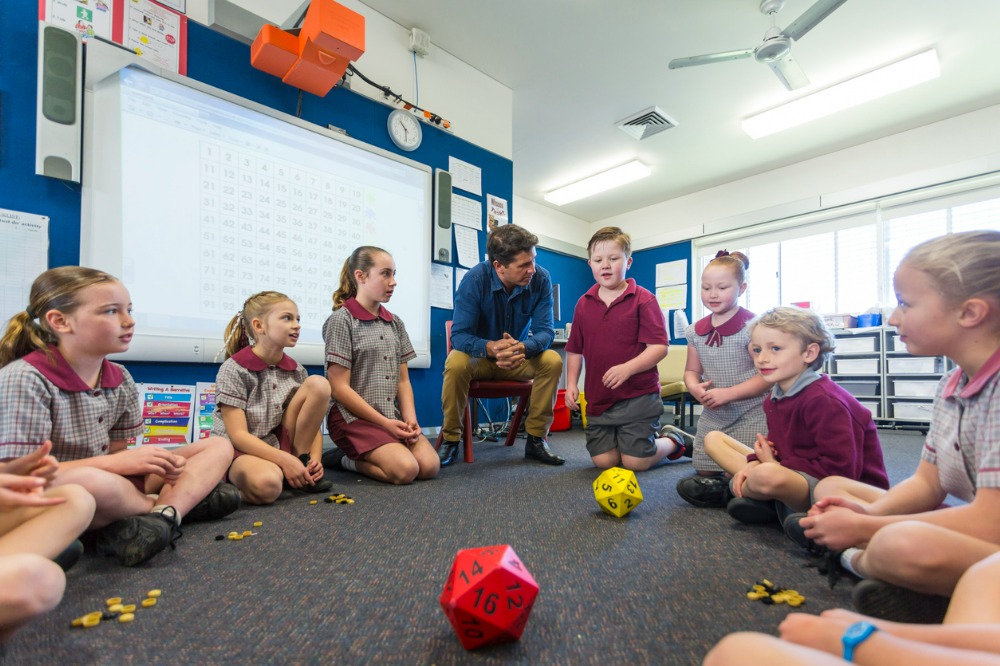
by Dr Selina Samuels
One of the key outcomes of the COVID era is undoubtedly changes to the way that many people work. There are articles in national publications on at least a weekly basis discussing the rise of hybrid working, remote first organisations and the impact of a decentralised workforce on city demographics. However, the privilege to choose where and how one works – the silver-lining of COVID – is not afforded to all professions, and teaching is one of those professions constrained by time and place.
That is not to say that nothing about the education sector has changed. COVID school lockdowns created a great deal of turbulence in learning and the impact on learning has yet to be fully quantified. Many teachers were forced to rethink their approach to educating their students, newly adopting digital tools such as Zoom and digital learning management systems. For many of them, it was a hugely stressful crash course in digital instructional design. Many felt that the digital learning environment was not a sufficient replacement for learning in person. But for other teachers that we have spoken to, teaching online opened the door into a different, more flexible and adaptable way to work. In short, the lockdowns have inspired teachers to wonder if they could continue to teach without the constraints of location and time dictated by the traditional classroom model of education.
My stepdaughter, an English teacher who lives in the UK, is returning to teaching after several years as a full-time parent. She frequently comments on the difficulty of finding a part-time teaching role to accommodate the needs of her family. Then there is the real challenge of schlepping across town in the tiny window between the opening of her daughter’s day care centre and the beginning of the school day. Anyone with experience of school timetabling knows how difficult it can be to accommodate part-timers. But at the same time, we have a female-dominated and an ageng professional population, both categories that are more likely to be attracted to part-time opportunities. And with COVID pointing us all in the direction of greater workplace flexibility and the availability of better technology, we need to ask the question about whether we can encompass a different way of “doing education”, particularly given the reality of the teacher shortage.
Before COVID, I wrote about the importance of rethinking the role of the teacher, given the evidence of high rates of stress, anxiety and depression reported by the profession and of teacher attrition. One of the factors that I discussed is the gap between the traditional structures of school space and time, and contemporary expectations about workplace flexibility and work/life balance.
If the traditional school day and classroom don’t look much like a modern workplace, how do they impact our learners? There has been extensive research to suggest that the timing of the school day does not necessarily suit teenagers, whose biological time changes in puberty and who need to go to bed and wake up later. When I taught in a secondary school, I knew that most of my students would be barely conscious before recess. The NSW government is interested in exploring the possibility of adapting the school day to accommodate the needs of working parents, but I think there is greater urgency in exploring potential changes for the benefit of teachers and students.
Given what we have learned from COVID about the deployment of technology to connect educators and learners, we need to start thinking about ways to vary school time and location to enable greater flexibility for teachers and students.
Secondary students could start their school day at 10am and then spend a few hours in the late afternoon working online from home with a teacher who would not have to leave home to provide that support. A part-time teacher could fit that work around other duties, such as childcare. There would need to be no change to the hours of staff on the ground in the school. Online tutoring could be incorporated into the school day to enable greater personalisation of the curriculum for students and also greater flexibility for teachers.
Is It is time to have a conversation about we can enable genuine innovation in teaching and learning and, in particular, how and where it happens. This conversation is essential to enable sufficient change in the education profession to ensure that it is sustainable into the future. Otherwise, we run the considerable risk of forcing people out of a profession that sorely needs them.
Dr Selina Samuels is the Chief Learning Officer of Cluey Learning


